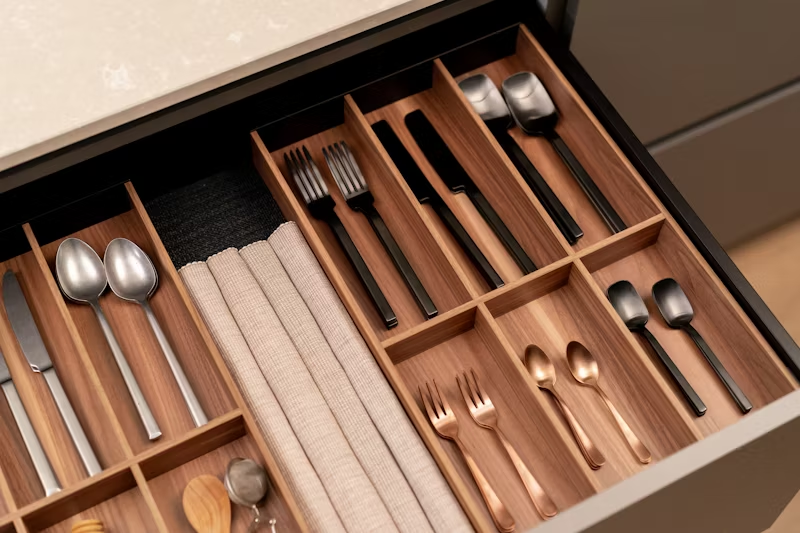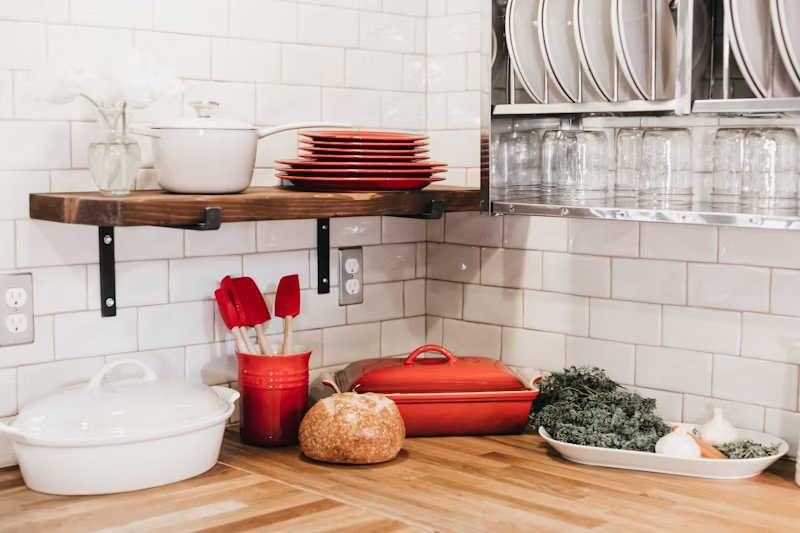Organizing a baby’s dresser can be a daunting task, especially for new parents. With so many tiny clothes, blankets, and accessories, it’s easy for the dresser to become cluttered and disorganized. However, with a few simple tips and tricks, it’s possible to create a functional and tidy space for all of baby’s belongings.
One of the first steps to organizing a baby’s dresser is to sort through all of the items and get rid of anything that is no longer needed or doesn’t fit. This will help to create more space and make it easier to find what you need. Once everything has been sorted, it’s time to start organizing.
There are many different ways to organize a baby’s dresser, but one popular method is to use drawer dividers. These can be purchased at most home goods stores and can help to separate different types of items, such as socks, onesies, and sleepers. Another helpful tip is to use the top drawer for frequently used items, such as diapers, wipes, and grooming essentials. By keeping these items within easy reach, it will make diaper changes and getting baby ready in the morning much easier.
Understanding Baby Dresser Essentials
When it comes to organizing a baby’s dresser, it’s important to understand the essentials. This section will cover three important aspects of organizing a baby’s dresser: assessing storage needs, types of baby items, and selecting the right organizers.
Assessing Storage Needs
Before organizing a baby’s dresser, it’s important to assess storage needs. This includes taking stock of the baby’s clothing, diapers, and supplies. Depending on the amount of storage space available, parents may need to invest in additional storage solutions such as baskets, bins, or storage boxes.
Types of Baby Items
When organizing a baby’s dresser, it’s important to consider the different types of baby items that need to be stored. These items include clothing, diapers, and supplies. Clothing can be further divided into categories such as onesies, pajamas, and outfits. Diapers can be divided by size and type. Supplies can include items such as wipes, creams, and lotions.
Selecting the Right Organizers
Selecting the right organizers is key to keeping a baby’s dresser organized. Drawer organizers are a great way to keep clothing and supplies separated and easily accessible. Baskets and bins can be used to store larger items such as blankets and towels. Storage boxes can be used to store out-of-season clothing or items that are not frequently used.
Overall, organizing a baby’s dresser requires careful consideration of storage needs, types of baby items, and selecting the right organizers. By taking the time to assess these factors, parents can create a functional and organized space for their little one.
Setting Up Your Organizing System
When it comes to organizing a baby dresser, setting up an efficient organizing system is key. This system should make it easy to find what you need quickly and keep everything in its place. Here are some tips for setting up an effective organizing system:
Drawer Division Strategies
Before putting anything in the dresser, consider using drawer dividers or other organizational tools to create designated spaces for different items. This will help keep everything in its place and prevent items from getting mixed up. Some popular drawer division strategies include:
- Using separate drawers for different types of items, such as clothes, blankets, and toys
- Dividing drawers into sections for different sizes of clothing
- Using dividers to separate items within a drawer, such as socks and onesies
Categorizing Baby Items
Categorizing baby items is another effective way to keep everything organized. When categorizing, consider grouping items together by type or purpose. For example, you might group all diapering supplies together in one drawer, all clothing together in another, and all toys in a third. This will make it easy to find what you need quickly and keep everything in its place.
Labeling for Efficiency
Finally, labeling your baby dresser can be a great way to make finding items even easier. Consider using a label maker to create personalized labels for each drawer or section of the dresser. This will help you quickly identify what’s inside and keep everything in its place. Some popular labeling options include:
- Drawer labels that indicate the contents of each drawer
- Personalized labels that include your baby’s name or initials
- Color-coded labels that correspond to different categories of items
By using these strategies, you can create an efficient and effective organizing system for your baby’s dresser. With a little planning and organization, you’ll be able to keep everything in its place and find what you need quickly and easily.
Effective Folding and Storing Techniques
When it comes to organizing a baby’s dresser, effective folding and storing techniques are essential. Here are some tips to help parents maximize their baby’s dresser space.
File Folding Method
One of the most efficient ways to store baby clothes is to use the file folding method. This technique involves folding clothes into small rectangles and standing them upright in the drawer. This way, parents can easily see all of their baby’s clothes at a glance, without having to dig through a pile.
To file fold clothes, first, lay the item flat on a surface. Then, fold the item in half vertically, bringing the bottom hem to the top. Next, fold the sleeves inward, creating a rectangle shape. Finally, fold the rectangle in half horizontally, creating a small square. Repeat this process for all baby clothes, and store them in the dresser drawer.
Maximizing Drawer Space
Maximizing drawer space is crucial when it comes to organizing a baby’s dresser. One way to do this is to use drawer dividers. These dividers can help to separate different categories of clothing, such as onesies, pants, and socks. This way, parents can easily find what they need without having to dig through a jumbled mess.
Another way to maximize drawer space is to use storage bins. These bins can be used to store linens, blankets, and other bulky items that may take up too much space in the dresser. By using storage bins, parents can keep their baby’s dresser organized and clutter-free.
In addition, parents can use the space under the dresser to store items such as diapers, wipes, and other baby essentials. By utilizing all available space, parents can create a functional and organized baby dresser that makes their lives easier.
Overall, effective folding and storing techniques are essential when it comes to organizing a baby’s dresser. By using the file folding method, drawer dividers, storage bins, and other space-saving techniques, parents can create a functional and organized space for their little one’s clothes and essentials.
Maintaining a Clutter-Free Dresser
Keeping a baby’s dresser organized can be a challenge, but with a few daily habits and a plan for outgrown clothes, it can be accomplished. Here are some tips to maintain a clutter-free dresser.
Daily Organization Habits
A daily routine of organizing the dresser can help keep it clutter-free. Every morning, take a few minutes to put away any clothes or items that are out of place. This can include putting away clean clothes, organizing diapers and wipes in the top drawer, and checking the back stock of clothes to make sure everything is in its place.
To make this process easier, consider using drawer dividers to separate different types of clothing and items. This can help keep everything in its place and make it easier to find what you need quickly.
Dealing with Outgrown Clothes
As babies grow, they quickly outgrow their clothes. To keep the dresser organized, it’s important to have a plan for dealing with outgrown clothes. One option is to have a designated bin or bag for clothes that no longer fit. When the bin or bag is full, it’s time to sort through the clothes and either donate or store them.
Another option is to sort through the clothes every few months and remove any items that no longer fit. This can help keep the dresser from becoming overcrowded and make it easier to find the clothes that do fit.
By incorporating these daily habits and having a plan for outgrown clothes, maintaining a clutter-free dresser can be achieved.
Enhancing Accessibility and Convenience
When organizing a baby dresser, it’s important to consider accessibility and convenience. This means making sure that the items you need most frequently are easily accessible and within reach. Here are some tips for enhancing accessibility and convenience in your baby’s dresser:
Top Drawer Essentials
The top drawer of your baby’s dresser should be reserved for items that you need to access quickly and frequently. This might include diaper changing essentials like wipes, diaper cream, and extra diapers. It’s also a good idea to keep a wipe dispenser in the top drawer so that you can easily grab a wipe with one hand while holding your baby with the other.
To keep things organized, consider using a diaper caddy or other organizer to separate different items. This will make it easier to find what you need quickly, even in the middle of the night.
Changing Table Integration
If you have a changing table in your baby’s room, it’s important to integrate it with the dresser to maximize convenience. This might mean keeping a few extra outfits and blankets in a drawer of the changing table, or using the top of the dresser as a changing station.
To make the most of your changing table/dresser combination, consider using a changing pad with built-in storage. This will allow you to keep diaper changing essentials within reach while also providing a soft and comfortable surface for your baby.
Overall, enhancing accessibility and convenience is all about making your life as a parent easier. By keeping your baby’s dresser organized and integrating it with other elements of your nursery, you can streamline your daily routine and spend more time enjoying your little one.



